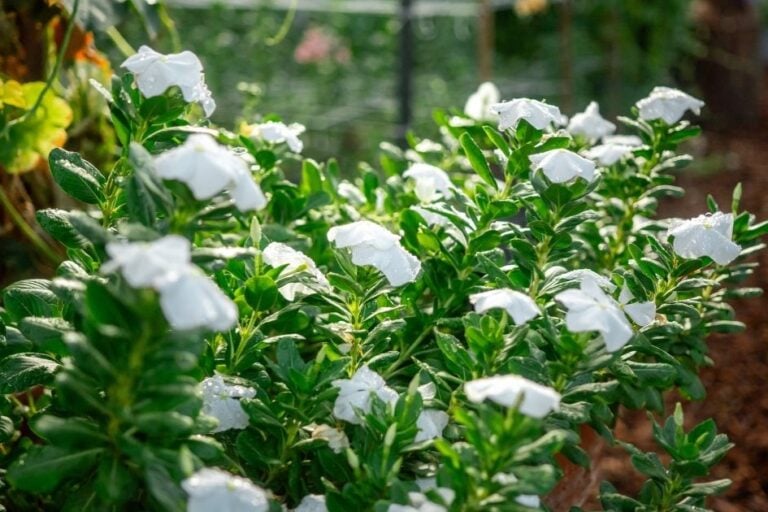Radish Planting: 10 Tips for Success
Radish planting is as close to “instant gratification” as you can get in the garden. These cool-season veggies sprout quickly, grow fast, and reward new gardeners in just a few short weeks. Below are ten tips on when to plant radishes, how to grow radishes, and common troubleshooting advice—so you can become a radish-growing pro.

In This Post:
- When to Plant Radishes
- Choose Loose, Nutrient-Rich Soil
- Try Different Types of Radishes
- Space and Thin Radishes Properly
- Keep Radishes Hydrated and Sunlit
- Interplant radishes with Slower-Growing Crops
- Companion Plants for Radishes
- When and How to Harvest Radishes
- Enjoy Radishes in Many Ways
- Troubleshooting: Why Aren’t My Radishes Bulbing?
- Quick Reference Table
- Final Thoughts on Radish Planting
1. When to Plant Radishes
Radishes thrive in cooler weather (below 65°F/18°C). When temperatures rise above that, radishes tend to bolt (go to seed) and become bitter.
- When to plant radishes: Direct-seed them about 4 weeks before your last spring frost. For a fall crop, plant them up to 4 weeks before your first frost.
- Low-desert planting: In hot climates like the low desert of Arizona, plant radishes from September 15 through March. If it’s unseasonably warm, wait for temps to cool down a bit in the fall before planting.
Soil temperature for germination: Radishes will sprout in soil from 45–90°F (7–32°C), with 85°F (29°C) being the sweet spot for quick germination. Learn how to check soil temperature in this guide.

Quick Tip: Transplanting radishes is not recommended. Direct-seed them for best results.
2. Choose Loose, Nutrient-Rich Soil
Radishes grow best in loose, well-draining soil enriched with organic matter. If your soil is overly high in nitrogen, you’ll end up with leafy tops but no bulbs.
- Well-draining soil: Radishes form best in loose, friable soil at least 6 inches (15 cm) deep.
- Balanced nutrients: Too much nitrogen leads to lots of leafy tops without forming a bulb. Add compost, but avoid too much fertilizer.
- Crop rotation: Avoid planting radishes where you recently grew other brassicas (e.g., cabbage, broccoli) to reduce the risk of root maggots. If possible, rotate every 3 years.

3. Try Different Types of Radishes
Experimenting with different types of radishes keeps radish planting fun and ensures a variety of flavors:
(Click on the name for seed sources.)
- Cherry Belle: Classic small red radishes, perfect for beginners.
- Watermelon Radish: Pale green outside, bright pink inside. They’re larger and fun to slice into salads.
- White Daikon: Daikon radish grows elongated white roots up to 18 inches (45 cm) long.
- Round Black Spanish: Spicy winter radish. Requires cool temperatures and short days.
- Rat’s Tail: Cultivated for its edible seed pods rather than the root.

See my list of other easy vegetables to grow in this guide.
4. Space and Thin Radishes Properly

Overcrowding is the number one cause of radishes failing to bulb up.
- Planting depth: Sow seeds ½ inch (1 cm) deep.
- Spacing: Space seeds about 3 inches (7.5 cm) apart, or 16 per square foot if you’re using square-foot gardening. Get more square foot gardening tips in this guide.
- Thin early and often: Remove extra seedlings when they’re just a week or two old. Give each radish room to expand.
5. Keep Radishes Hydrated and Sunlit
Proper watering is crucial for healthy radishes:
- Even moisture: Water consistently so the soil stays slightly damp. If they dry out, radishes may bolt. If they’re too wet, roots can split.
- Sunlight: Radishes need at least 6 hours of direct sunlight. If they don’t get enough light, they’ll produce leaves without forming a bulb.

6. Interplant radishes with Slower-Growing Crops
A smart technique is to sow radishes in the same bed as veggies that take longer to mature:
- Great companions: Plant radishes near slower-growing veggies like carrots, beets, or parsnips. You’ll harvest the radishes before the others need that extra room.
7. Companion Plants for Radishes
Radishes are often grown as a trap crop and can help attract pests away from more vulnerable crops:
- Pest decoys: Radishes may draw aphids and flea beetles away from peppers, squash, or cabbage.
- Other companion tips: Check out my companion planting guide for more ideas on maximizing space and reducing pests naturally. My favorite cool-season and warm-season companion plants are listed in these guides as well.
Planting radishes near cucumbers can help deter pests and improve soil. Learn how they work together in this helpful guide to cucumber companion plants.
8. When and How to Harvest Radishes

You’ll know it’s time to pull radishes when they form a bulb about the size of a quarter (about 1 inch/2.5 cm in diameter).
- Don’t wait too long: Younger radishes are milder and crisper.
- Avoid spongy bulbs: Overgrown radishes become woody, hot, or pithy.
- Check one: If you’re unsure, gently push back soil or pull a test radish to see if it’s ready.
9. Store Radishes for Later

Radishes can stay fresh for weeks if stored properly:
- Prep for storage: Cut off the greens, brush off excess dirt, and place them in a plastic bag or these produce storage containers.
- Refrigerator life: Most radishes will keep for 1–3 weeks this way.
10. Enjoy Radishes in Many Ways
Of course, radishes are delicious sliced in salads, but there’s so much more you can do:
- Shred into slaws for a peppery crunch.
- Add to egg or potato salad for zing.
- Toss into stir-fries or soups. Stir-fries and soups benefit from radishes’ subtle sweetness after cooking.
- Pickle or ferment for a probiotic-rich treat. They develop an irresistible tang and are perfect for beginners to try fermenting.

Troubleshooting: Why Aren’t My Radishes Bulbing?
Many people assume radishes are foolproof, so it’s frustrating to see leaves with no radish underneath. Here are common reasons and quick fixes:
- Overcrowding: Thin them early and space them out to at least 3 inches (7.5 cm).
- Not Enough Sunlight: Ensure they get at least 6 hours of sun.
- Poor Soil: Hard, compacted soil can prevent bulbs from forming. Loosen soil and add compost.
- Inconsistent Watering: Keep moisture even. Too dry causes bolting; too wet causes splitting.
- Excess Nitrogen: This leads to leafy growth. Amend with compost, not heavy fertilizers.

Quick Reference Table
| Growing Factors | Details |
|---|---|
| Season | Cool weather (below 65°F/18°C) |
| Soil Temp for Germination | 45–90°F (7–32°C), optimum 85°F (29°C) |
| Sowing Dates | – Spring: 4 weeks before last frost – Fall: 4 weeks before first frost – Hot Climates (Low Desert): Sept 15–Mar |
| Depth | ½ inch (1 cm) |
| Spacing | 3 inches (7.5 cm) or 16 per square foot |
| Water | Even moisture, avoid drying out or waterlogging |
| Sunlight | At least 6 hours of direct sun |
| Harvest Size | Bulbs ~1 inch (2.5 cm) in diameter |
| Storage | In fridge, 1–3 weeks (greens removed) |
Final Thoughts on Radish Planting
Growing radishes is incredibly rewarding. With a little attention to proper radish planting techniques—like timing your planting dates, giving them space, providing ample sun, and watering consistently—you’ll be enjoying crisp, tasty radishes in no time.
- Spring planting window: 4 weeks before last frost.
- Fall planting window: 4 weeks before first frost.
- Hot climates (e.g., low desert of Arizona): Plant from September 15–March (wait for cooler temps if it’s still hot).
If this post about how to grow radishes was helpful, please share it with your fellow gardeners. Now that you’re a radish-growing pro, you can use the same methods on other root veggies. Happy planting, and enjoy your fresh harvest!








Radishes are good for the bladder, herbalists say. For a morning-after (like, 1 January 🙂 eating a few is supposed to knock out the stomach problem, ease a headache and so on. Right now, October, is the best time to grow daikon and Black Schifferstadt in most of Arizona, both winter radishes, and make a good winter cover. Shifferstadt is called the poor man’s horseradish, and for that reason are good against nematodes. And, I hope pill bugs.
Great to know. Thanks for sharing.
How do you ferment radishes
I use these lids: https://amzn.to/3QM8sjD and the recipe in the booklet
What should I use to combat pests eating my radish leaves?
It’s probably flea beetles – they love radishes. You can try using insecticidal soap – but use it sparingly if at all. You could also try floating row cover. This blog post may be helpful: https://growinginthegarden.com/organic-pest-control-that-really-works/
I have a new bed I have prepared for spring 2023… Can I go ahead and plant radishes in it for a cover crop? Thanks Angela.
I haven’t grown radishes as a cover crop, but I don’t see why you can’t. Now is a good time to plant in many areas.